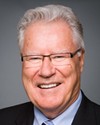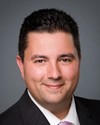In terms of the research, my colleague mentioned that there are essentially two aspects of the program.
One is what I call more field research. For example, there's the business vitality index, which is a practical research tool to develop best practices in terms of a community assessing its attractiveness to attract investments, its attractiveness to grow itself economically. In that case we partnered with communities that wanted to build this tool, and then that becomes a mechanism that can be replicated and used by the community. That's sort of active, on-the-ground research.
The second aspect to the program is more the socio-economic study of the economic development and situation of the official language minority communities in particular, which is more or less taking the overall data that we have through Statistics Canada and actually taking it further, actually adding more richness and detail so that we can pull out the specific economic circumstances, the population circumstances and so on, of the communities that are the focus of the economic development initiative.
That's our service, essentially, to all the departments involved in the road map. It's to ensure that we have the right evidence on what's happening in those communities and can put together a strong research program in that regard.
As it relates to tourism, of course, the issue in that case is partly to ensure that we have a very active dialogue with communities, specifically as to their needs in relation to attracting tourists. So there is marketing, putting together programs to ensure they can market on a collective basis so that not everyone is trying to do this themselves. It's very costly. But if you can put together communities into a plan and you can, overall in a regional area, bring more interest into that area....
The second aspect is also to work on strategic planning around what attractions can be built, which is more the tourist experience and ensuring that we can enhance the tourist experience. The EDI money is helpful in terms of some of the strategic planning, and then again through our regular programs, through regional agencies, they can then identify if there are worthy projects that they can carry forward, and actually finance part of those projects and see them through to completion.
Marketing is one key aspect because there's a lot of competition in tourism to get our message out, to get these communities' message out to the specific target markets they want to focus on, and, second, to help them build up the actual asset, the tourist experience, through training and the development of infrastructure that would help them offer a full experience to tourists.




